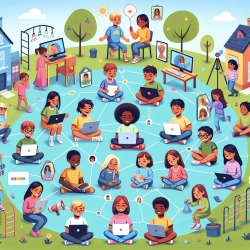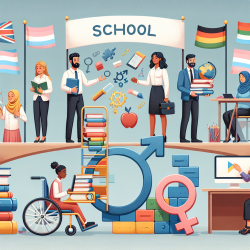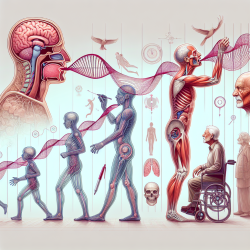Understanding the Impact of Intimate Partner Violence on Youth: A Call to Action for Practitioners
The recent study titled "Examining gender and sexual orientation differences in physical intimate partner violence experienced and perpetrated by youth living in eThekwini district South Africa during the COVID-19 pandemic" sheds light on the pressing issue of intimate partner violence (IPV) among youth. The study, conducted in the eThekwini district of South Africa, highlights the disparities in IPV experiences and perpetration among different sexual orientations and gender identities during the COVID-19 pandemic.
Key Findings
The study surveyed 1,588 youth aged 16-24, revealing that 14.6% experienced physical IPV and 9.8% perpetrated it since the pandemic's onset. Notably, LGBTQ+ youth, particularly non-conforming individuals, faced significantly higher rates of IPV compared to their heterosexual peers. Non-conforming youth had an adjusted odds ratio of 2.36 for experiencing IPV and 2.19 for perpetrating it, compared to heterosexual counterparts.
Implications for Practitioners
These findings underscore the urgent need for practitioners to adopt gender-transformative approaches that transcend traditional gender binaries. Here are some actionable steps practitioners can take:
- Educate and Train: Enhance your understanding of the unique challenges faced by LGBTQ+ youth. Training programs should incorporate insights from this study to better equip practitioners in identifying and addressing IPV in diverse relationships.
- Advocate for Inclusive Policies: Support the development and implementation of policies that protect and empower LGBTQ+ youth, ensuring they have access to necessary resources and support systems.
- Foster Safe Spaces: Create environments where all youth feel safe to express their identities and experiences without fear of discrimination or judgment.
- Collaborate with Community Organizations: Partner with local LGBTQ+ organizations to provide comprehensive support and resources tailored to the needs of diverse youth populations.
Encouraging Further Research
While this study provides critical insights, it also highlights gaps in our understanding of IPV among LGBTQ+ youth. Practitioners are encouraged to engage in further research to explore:
- The long-term impacts of IPV on mental health and development in LGBTQ+ youth.
- Effective intervention strategies that are inclusive and culturally sensitive.
- The role of societal and community-level factors in perpetuating or mitigating IPV.
Conclusion
As practitioners committed to improving outcomes for children and youth, it is imperative to integrate data-driven insights into our practices. By addressing the unique challenges faced by LGBTQ+ youth, we can foster healthier relationships and contribute to the prevention of IPV globally.
To read the original research paper, please follow this link: Examining gender and sexual orientation differences in physical intimate partner violence experienced and perpetrated by youth living in eThekwini district South Africa during the COVID-19 pandemic.










